Ding Dong and Other Places
In 1996 Goran Krupp rode his bike from his home in Stockholm, all the way to Everest and attempted a self-supported summit; unfortunately his quest was not entirely successful and he was forced to turn back a mere 300ft from the summit, testament to an iron discipline that I think made the whole enterprise even more impressive. I mention it because I’m very much a fan of combining a bike with some hiking / climbing, and adding interest to a ride with an ‘objective’, although thanks to the present Covid situation such bicycle-powered epics are probably off the table for a little while longer. In the meantime however I find there is pleasure, and motivation, to be found in somewhat smaller-scale adventures close to home…
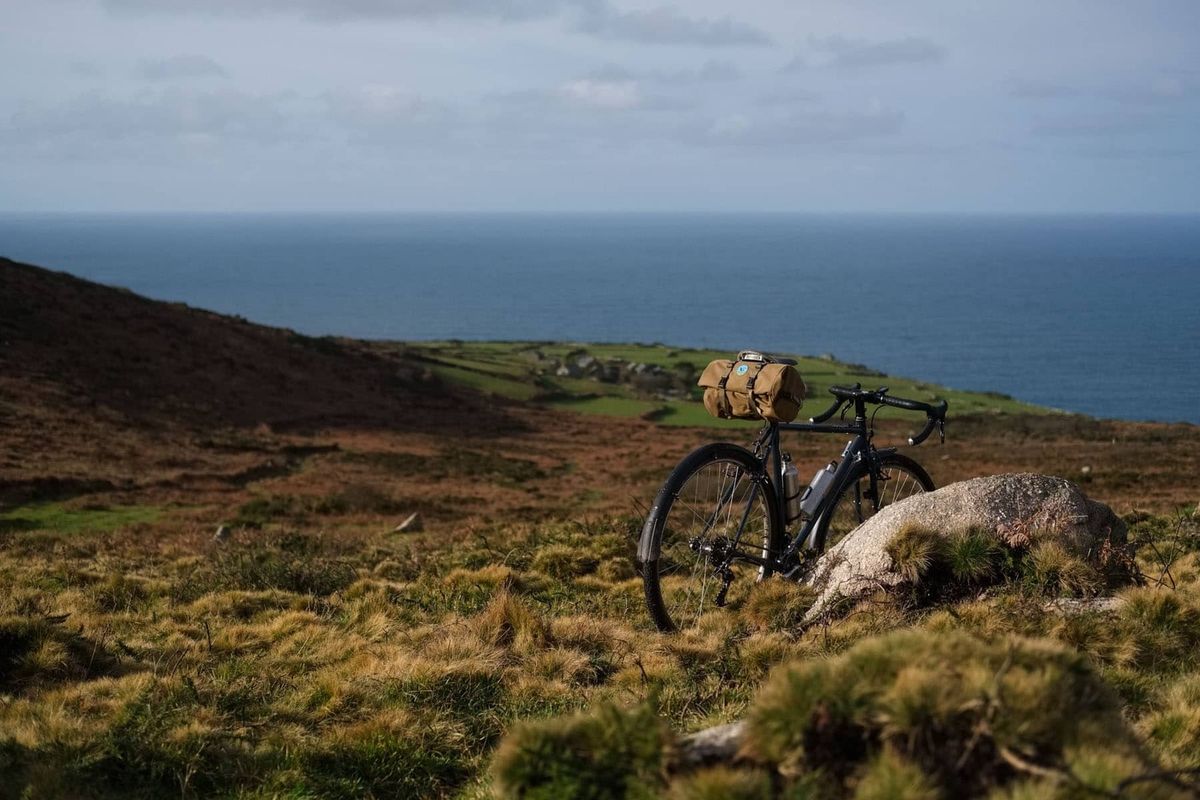
There are no mountains, and no wilderness, here in the far west of Cornwall, and while a hilly area there are only a few spots that could remotely be considered ‘summits’. One such is Carn Galva, a granite outcrop, high on the Penwith moors, and towering a “mighty” 827ft over the Atlantic, crashing on the rugged cliffs below. Hardly an epic yet still a worthy objective for a satisfying Sunday morning nano-adventure; exploring winding backroads and muddy trails through an ancient and storied landscape, topped off with a short summit scramble to enjoy some fine views of the rugged north coast of Penwith.
To think of Cornwall as little more than a bucket and spade destination is to take a superficial view that ignores centuries of industrial heritage, and millennia of cultural heritage; while short this ride is something of a favourite of mine for its cross-section through history.
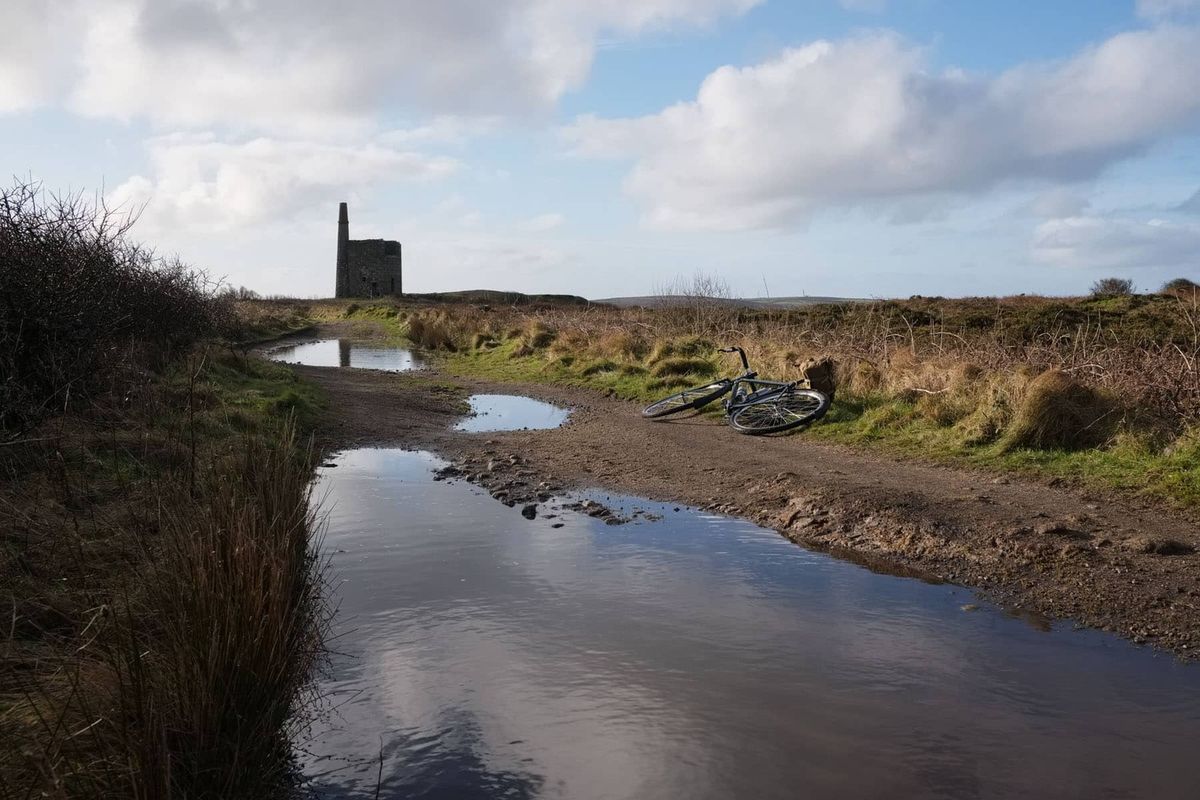
It’s a long drag of a few miles, from sea level, to reach the high moors of Penwith at Ding Dong. There’s not much up here.. a row of exposed cottages and, as with much of west Cornwall, the remains of Cornwall’s mining past in the form of ruined tin mine engine houses - draughty granite monuments to a prosperous and industrious past. The mines here form part of the Unesco World Heritage area that extends over all of this area, and the mines at Ding Dong are thought to be among the oldest in the United Kingdom. It’s uncertain where name Ding Dong comes from; it could refer to the “head of the lode” or the outcrop of tin on the hill, while it has also been noted that the church in the nearby village of Madron has a “Ding Dong Bell’ that was rung to mark the end of the last shift of the miners.
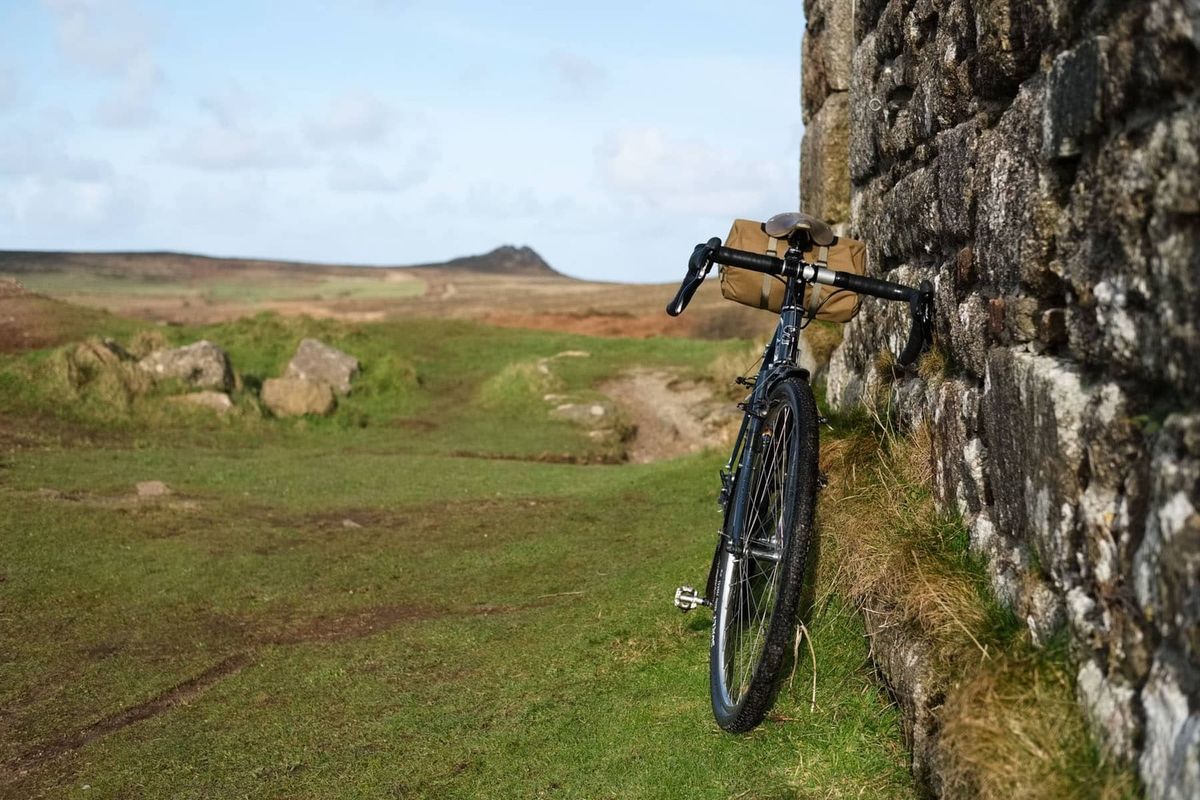
These ruins once housed the steam engines for driving the pumps, keeping the extensive tunnels free of floodwater, and as lifting engines for man and material. As an aside the high pressure steam engine that made all this possible was the invention of Cornishman and mining engineer, Richard Trevithick. His legacy is still celebrated annually, on Trevithick Day, with a festival of steam in the place of his birth, Camborne. Thanks to the Cornish diaspora and its export of mining expertise across the world, the distinctive design of the Cornish mine engine houses that litter this landscape can be seen in many far-flung places; while travelling by bike I’ve bumped into families descended from Cornish miners as far afield as Argentina and Australia. It is always a special feeling to stumble across the legacy of the Cornish while exploring distant trails on my bike; Cornwall, and the Cornish have a global connection and influence that many are unaware of.

The views from Ding Dong stretch across the Penwith moor, with the granite form of Carn Galva visible in the distance.
Enroute to Carn Galva lies one of the most well known of the ancient monuments that litter the landscape around here. Lanyon Quoit dates originally from somewhere between 3500-2500 BC, in its current form however it only dates from 1824 when it was re-erected after being flattened by a storm in 1815. The storm fractured some of the stones so one of the original four support stones is now missing, and the the others are somewhat shortened and squared off. Despite all that it’s still a good spot to enjoy the ambience, and a biscuit or three, for a few moments, especially in winter when there is rarely anyone around. I imagine there will be a Tripadvisor review somewhere complaining of the lack of a cafe and souvenir shop.
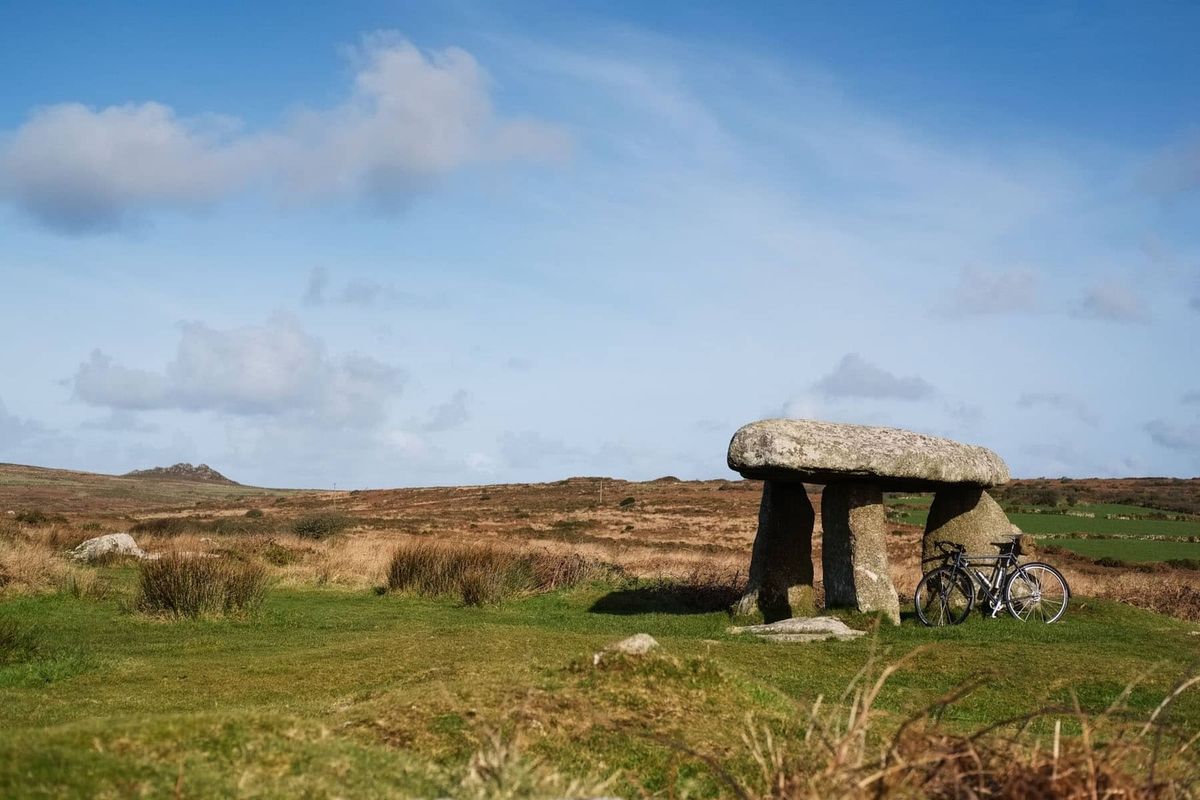

In the Cornish language “scrifa” means “writing”, and “mên” is “stone”, so the Mên Scryfa menhir, high on the Penwith moors, literally is “stone with writing”. The stone itself is thought to date originally from the Bronze Age (somewhere between 2750 and 4100 years ago), but its name refers to its inscribing, sometime around the 5th or 6th century AD, as a memorial to the son of a tribal leader of an Iron Age clan. It carries the inscription “RIALOBRANI CVNOVALI FIL” in latinised Cornish, which means “Royal Raven, son of the famous leader”. The story of Rialvran is recorded in fragmentary form, and tells of how a great battle was fought at this spot, as Rialvran tried to recover his father’s lands from an interloper who had seized them. The inscription itself is on the north facing side of the stone and is almost lost to lichen and the ages, and is hard to photograph unless the light is just right.
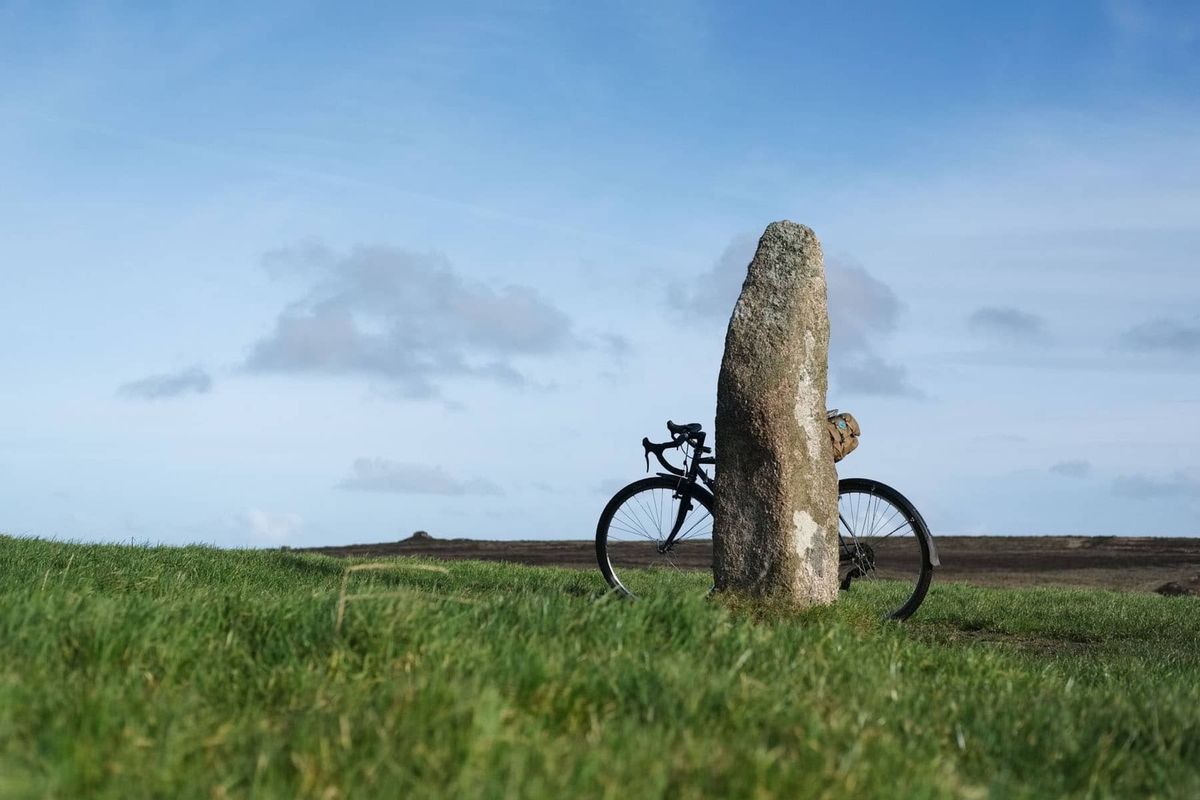
Here’s a pic, in which the inscription is visible, from another day on which the lighting was more suitable. I pass the Mên Scryfa many times each year while criss-crossing the moorland trails but despite that familiarity I’m captivated by it, its story adds so much to the sense of place when I’m stomping around this wild and desolate area on my bike.
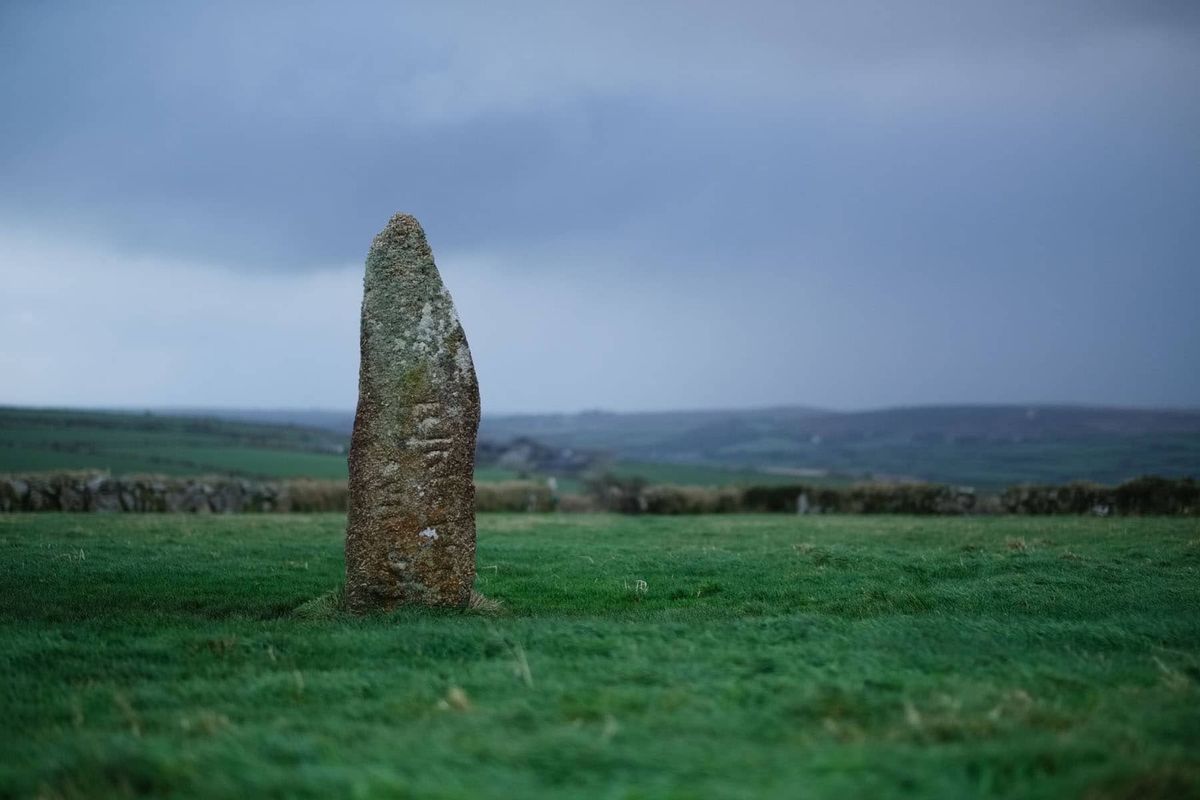
The final approach to Carn Galva is via muddy, and frequently flooded, singletrack. The scramble itself is short, and really it’s easiest just to abandon the bike in the saddle between the two “summits”.
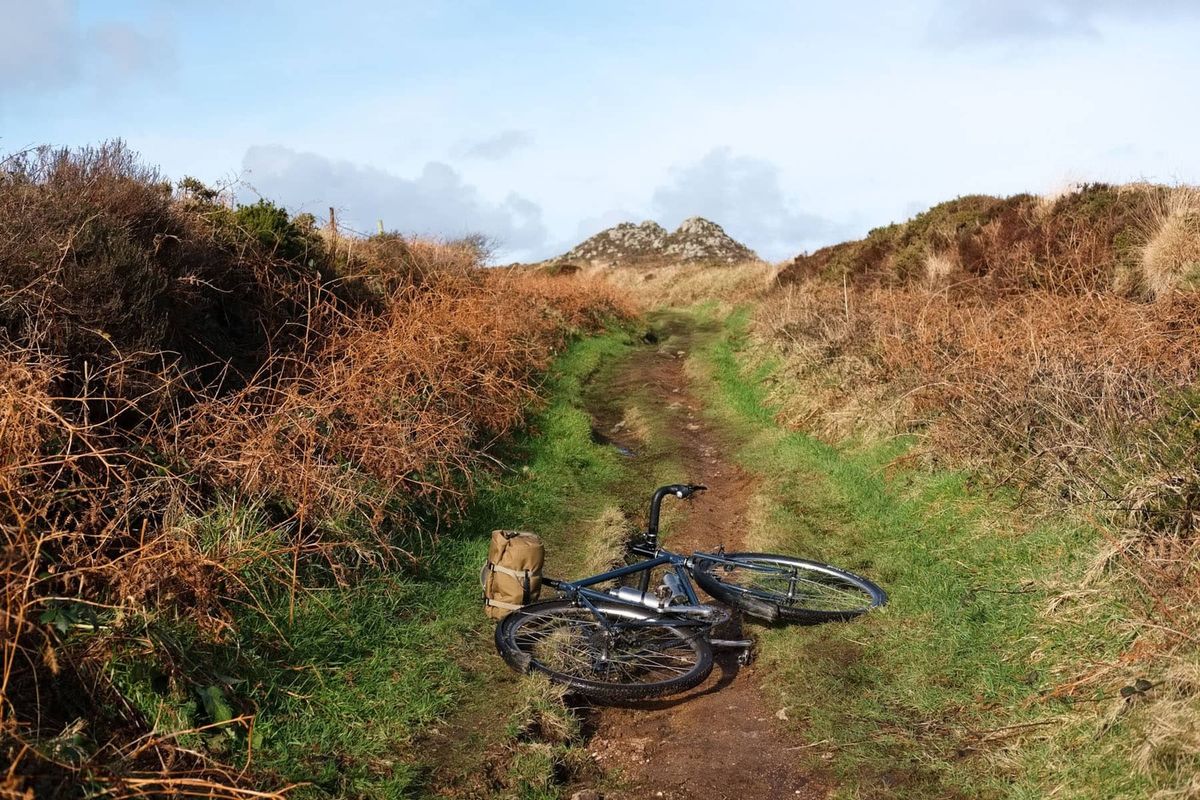
At times it seems as if there is not a square millimetre of Penwith that does not have some legend, fairytale, or spiritual belief attached to it, and Carn Galva is no different. Legend has it that the rocks here were home to a friendly giant, Holiburn, who, in return for gifts of sheep and oxen, protected the villagers of nearby Morvah and Zennor from the evil giants of Trecrobben (now Trencrom) farther to the east. The story of Holiburn has a sad ending; one day while enjoying the company of his tiny humans he tapped one of his friends on the head during a game, unintentionally splattering the poor fellow across the grass. Utterly distraught by this, Holiburn pined away and ultimately died of a broken heart. To this day there is a large stone known as The Giant’s Grave near the church in Morvah.
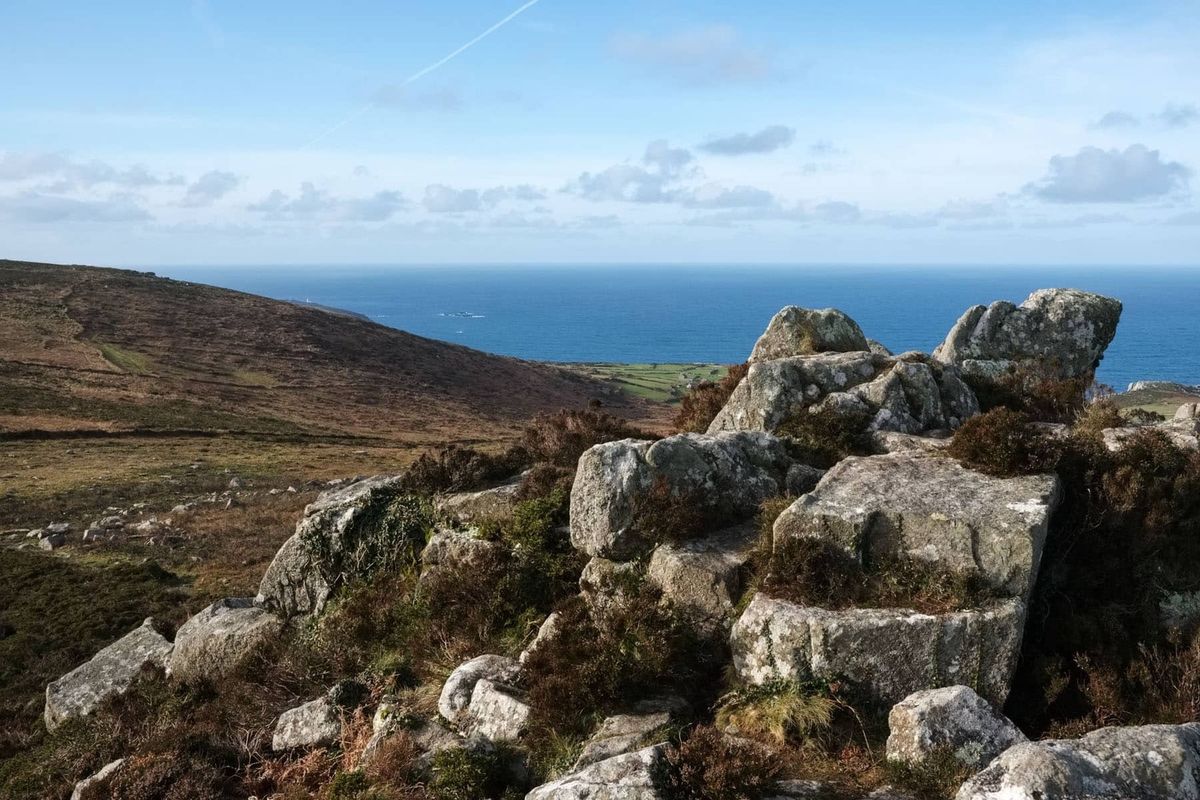
Views from Carn Galva stretch away west with the white speck of Pendeen Watch lighthouse just visible in the distance, and east across the moors - a world away from the overwhelmingly heavily touristed coast. It’s a good place to escape to during the madness of the summer months, and in winter time can be excitingly wild in the storms that sweep in off the ocean. The descent to the coast road between Morvah and Zennor is a boggy, rocky, fun one, and while the remainder is asphalt, setting sail on an easterly heading for home is no hardship as the road ducks and dives, twists and turns in spectacular fashion on its way along the coast.
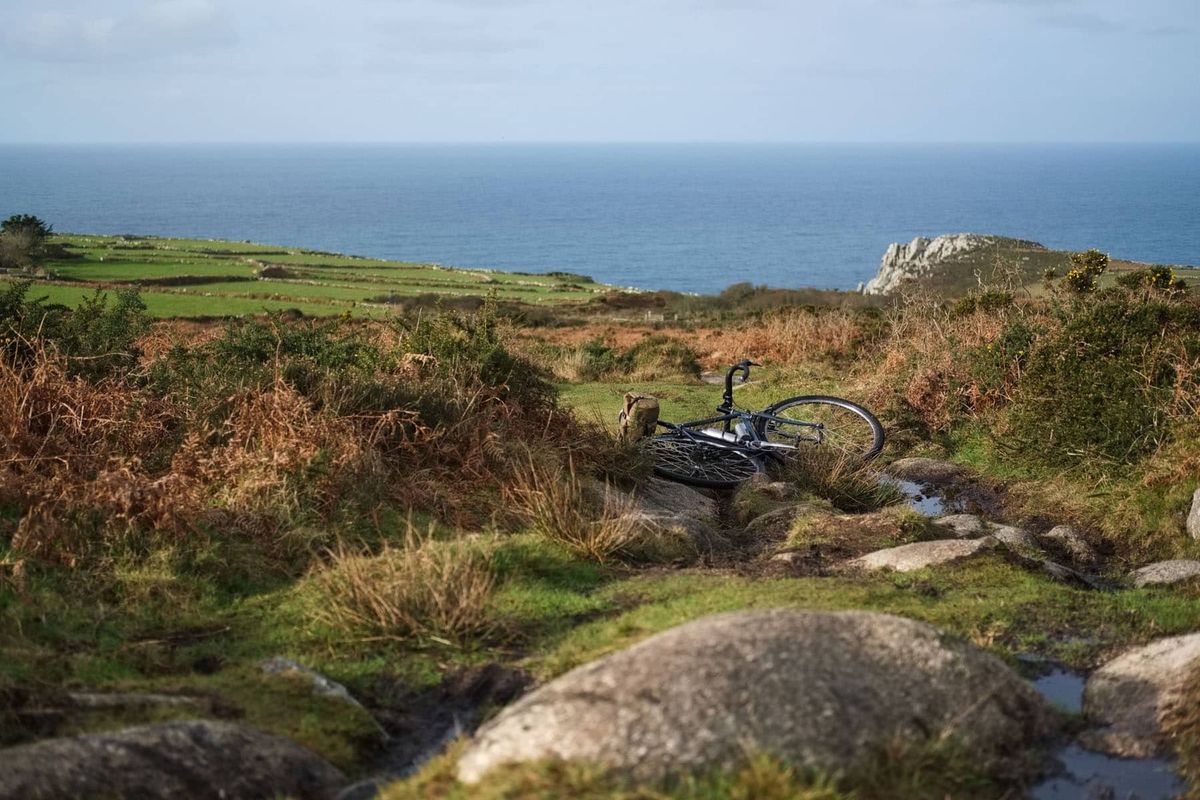
Words and pictures - Mike Hayes
You can read more of Mike’s wonderful writing, and follow his further adventures here…